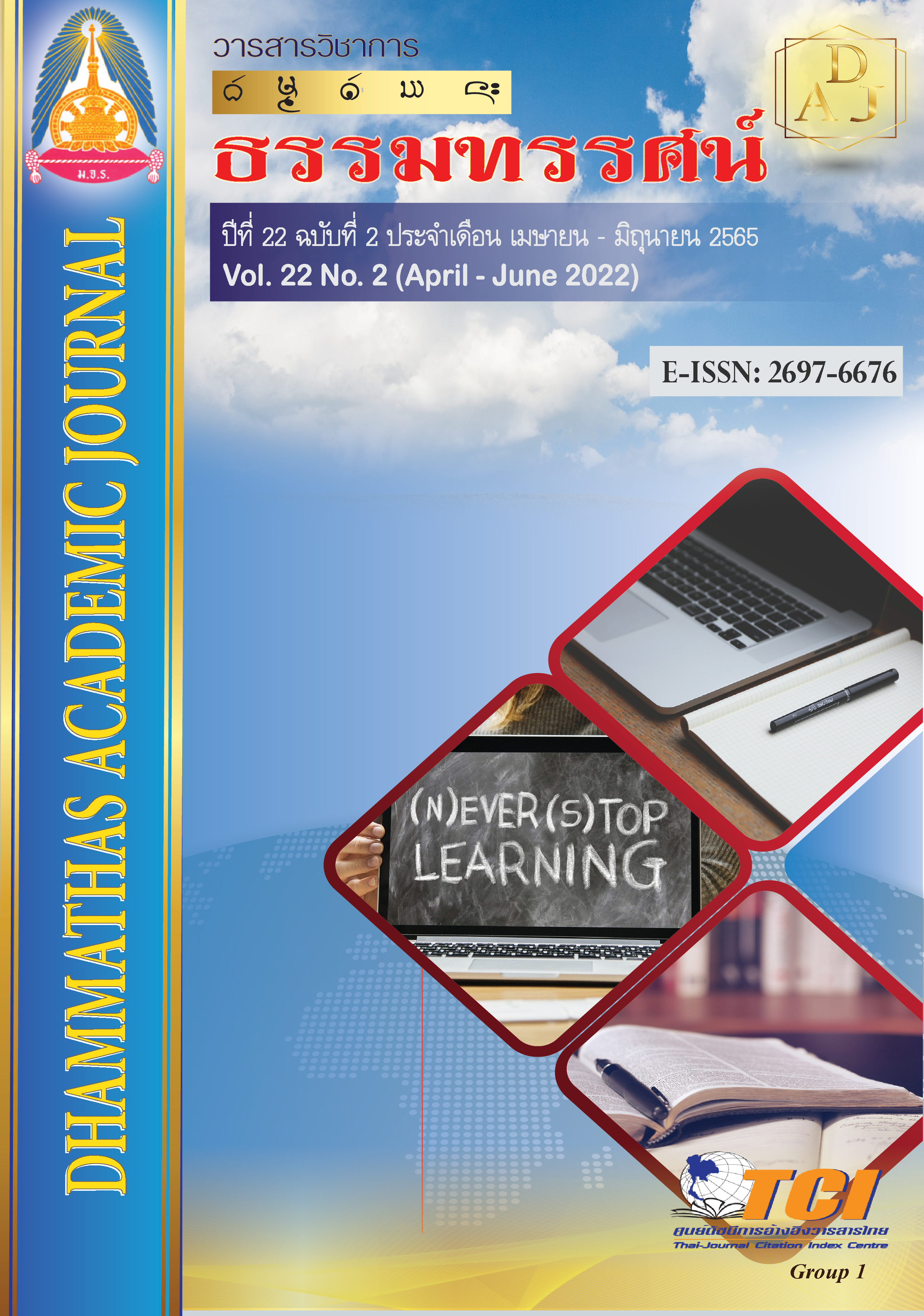The Development of Teacher Followership Indicators in Secondary Schools under the Office of the Basic Education Commission in the North-Eastern Region of Thailand
Main Article Content
Abstract
The objectives of this study were 1) to develop the indicator of teacher’s followership in secondary schools under the Office of the Basic Education Commission (OBEC) in the North-eastern region of Thailand, 2) to examine the congruence of the developed structural model teacher’s followership indicators in secondary schools under OBEC in the North-eastern region of Thailand with empirical data and 3) to develop a manual handbook using as a reference of teacher’s followership indicators for secondary schools. The study was conducted by mixed methods and was divided into 3 phases.The first phase: to develop conceptual framework and indicators by analyzing relevant documents and researches, interviewing senior experts and conducting case studies; the second phase was the examination of the author’s research hypothesis with empirical data by seeking the inputs from 600 school administrators and teachers working in secondary schoolsunder the OBEC in the North-eastern region of Thailand. The research tool was a 5-level rating scale questionnaire. The data analysis was conducted within statistics software the user manual on the developed teacher’s followership indicators was created and examined by experts in the third phase.
The findings are as follows:
1. The teacher’s followership indicators consist of 6 main components, 25 sub-components and 118 indicators, which can be classified as, 22 indicators on responsibility, 13 indicators on self-development, 20 indicators on critical thinking, 21 indicators on human relations, 20 indicators on team work and 22 indicators on courage.
2. The developed structural model of teacher’s followership indicators in secondary schools under OBEC in the North-eastern region of Thailand shows the congruence with empirical data, with chi-square = 40.67, df = 42, GFI = 0.99, AGFI = 0.96 and RMSEA = 0.00, which are all in conformity with the hypothesis.
3. The overall appropriateness of the manual book for teacher’s followership indicator in secondary schools is at the high level ( = 4.50 S.D. = 0.32).
Article Details

This work is licensed under a Creative Commons Attribution-NonCommercial-NoDerivatives 4.0 International License.
เพื่อให้เป็นไปตามกฎหมายลิขสิทธิ์ ผู้นิพนธ์ทุกท่านต้องลงลายมือชื่อในแบบฟอร์มใบมอบลิขสิทธิ์บทความ ให้แก่วารสารฯ พร้อมกับบทความต้นฉบับที่ได้แก้ไขครั้งสุดท้าย นอกจากนี้ ผู้นิพนธ์ทุกท่านต้องยืนยันว่าบทความ ต้นฉบับที่ส่งมาตีพิมพ์นั้น ได้ส่งมาตีพิมพ์เฉพาะในวารสาร วิชาการธรรม ทรรศน์ เพียงแห่งเดียวเท่านั้น หากมีการใช้ ภาพหรือตารางของผู้นิพนธ์อื่นที่ปรากฏในสิ่งตีพิมพ์อื่นมาแล้ว ผู้นิพนธ์ต้องขออนุญาตเจ้าของลิขสิทธิ์ก่อน พร้อมทั้ง แสดงหนังสือที่ได้รับการยินยอมต่อบรรณาธิการ ก่อนที่บทความจะได้รับการตีพิมพ์References
ก่อกนิษฐ์ คำามะลา. (2563). การพัฒนาตัวบ่งชี้ความสุขในการทำงานของครูประถมศึกษา สังกัดสำนักงานคณะกรรมการการศึกษาขั้นพื้นฐานในภาคตะวันออกเฉียงเหนือ. (วิทยานิพนธ์ปรัชญาดุษฎีบัณฑิต). สกลนคร: มหาวิทยาลัยราชภัฏสกลนคร.
ฐิตินันท์นันทะศรี. (2563). การพัฒนาตัวบ่งชี้ภาวะผู้นำเชิงนวัตกรรมของผู้บริหารสถานศึกษา สังกัดสำนักงานเขตพื้นที่การศึกษาประถมศึกษาในภาคตะวันออกเฉียงเหนือ. (วิทยานิพนธ์ปรัชญาดุษฎีบัณฑิต). สกลนคร: มหาวิทยาลัยราชภัฏสกลนคร.
ณภูผา โพธิมา. (2561). โมเดลความสัมพันธ์เชิงโครงสร้างตัวบ่งชี้ภาวะผู้ตามที่มีประสิทธิผลสำหรับครู สังกัดองค์กรปกครองส่วนท้องถิ่น. (วิทยานิพนธ์ปรัชญาดุษฎีบัณฑิต). ขอนแก่น: มหาวิทยาลัยมหามกุฎราชวิทยาลัย วิทยาเขตอีสาน.
ศรีวรรณ แก้วทองดี. (2562). แนวทางการพัฒนาตนเองของครูในสถานศึกษาสหวิทยาเขตบึงสามพันสังกัดสำนักงานเขตพื้นที่การศึกษามัธยมศึกษา เขต 40. (วิทยานิพนธ์ครุศาสตรมหาบัณฑิต). นครสวรรค์: มหาวิทยาลัยราชภัฏนครสวรรค์.
สามารถ อัยกร และคณะ. (2560). บทบาทของผู้ตามในคุณลักษณะภาวะผู้ตามแบบมีประสิทธิผล. วารสารวิชาการมหาวิทยาลัยปทุมธานี, 9(1), 195-203.
สำนักงานคณะกรรมการการศึกษาแห่งชาติ. (2553). พระราชบัญญัติการศึกษาแห่งชาติ พ.ศ.2542 และที่แก้ไขเพิ่มเติม (ฉบับที่3) พ.ศ.2553. กรุงเทพฯ: สำนักนายกรัฐมนตรี.
สุรีย์รัตน์ พัฒนเธียร และพร้อมพิไล บัวสุวรรณ. (2552). ตัวแบบความสามารถทางภาวะผู้นำครูในสถานศึกษาขั้นพื้นฐาน. วารสารวิทยาสารเกษตรศาสตร์ สาขาสังคมศาสตร์, 30(2), 130-142.
อนุพงศ์ อวิรุทธา. (2555). ใครคือผู้ตามที่ดีในองค์กร. เข้าถึงได้จาก https://www. siamturakij.com
Kelly, R. E. (2008). The Power of Followership: Howto create leaders people want to follow and followerswho lead themselves. New York: Doubleday.
Ye, Y. (2020). Factors Relating to Teachers’ followership in international universities in Thailand. Retrieved from http://www.assumptionjournal.au.edu/index.php/Scholar/article/view/856/765

